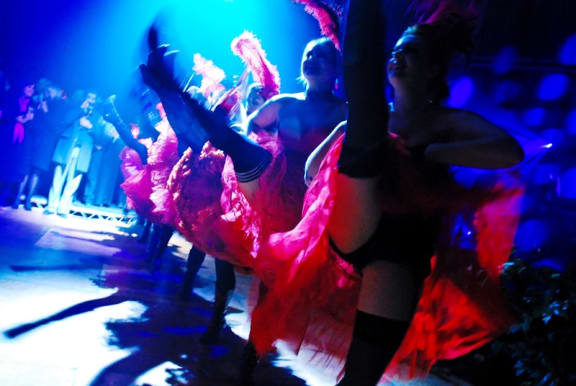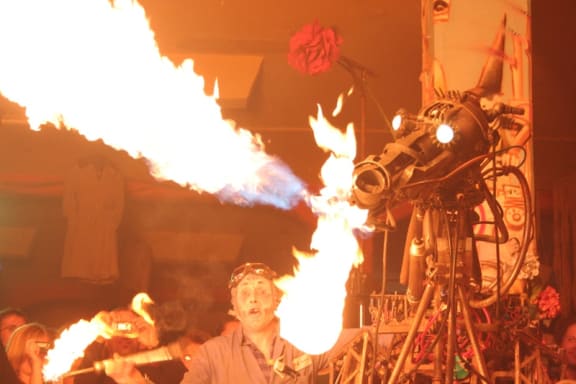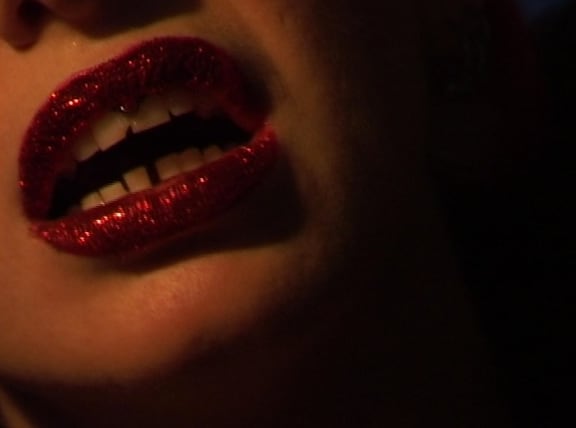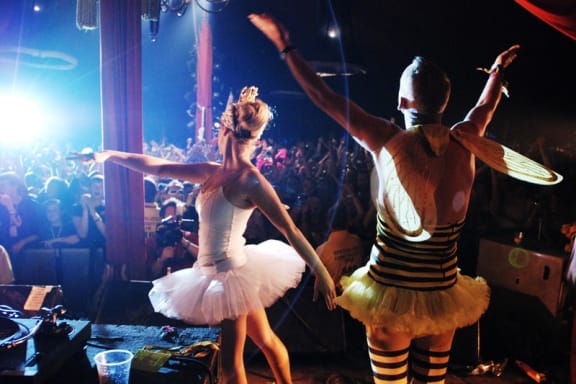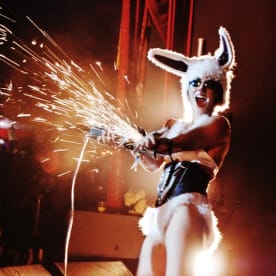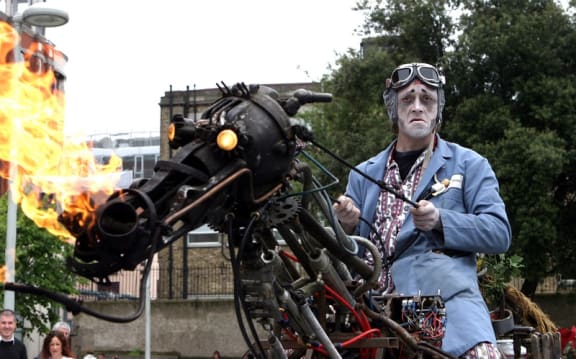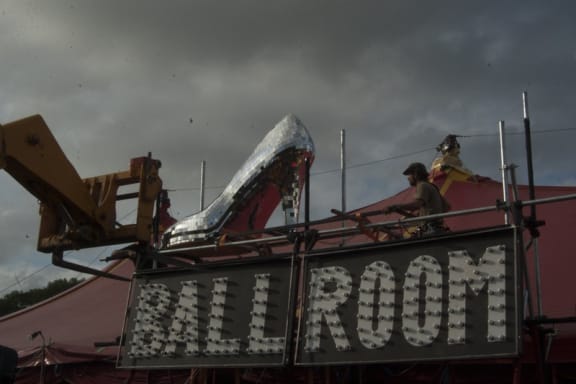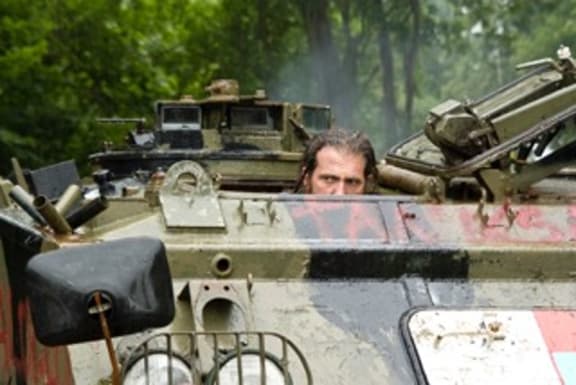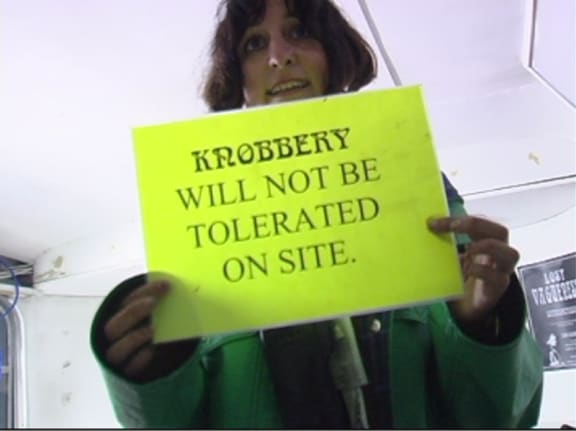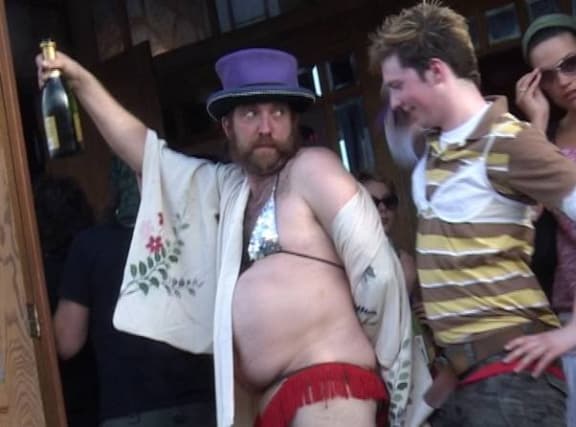Roy Gurvitz came from a comfortable Jewish family, with a glamorous mother and a violent father, and by the 1980s had escaped his family by running away and joining the growing New Age Traveller community.
Heading to Glastonbury each year, to work as one of the regular site crew, Gurvitz and his friend and founder of the Glastonbury festival, Michael Eavis, decided to build a sub-section of the festival as an 'ironic faux casino' in the middle of a muddy field.
From there, the event grew in opulence, decadence and influence before imploding spectacularly. Soon enough Lost Vagueness was born.
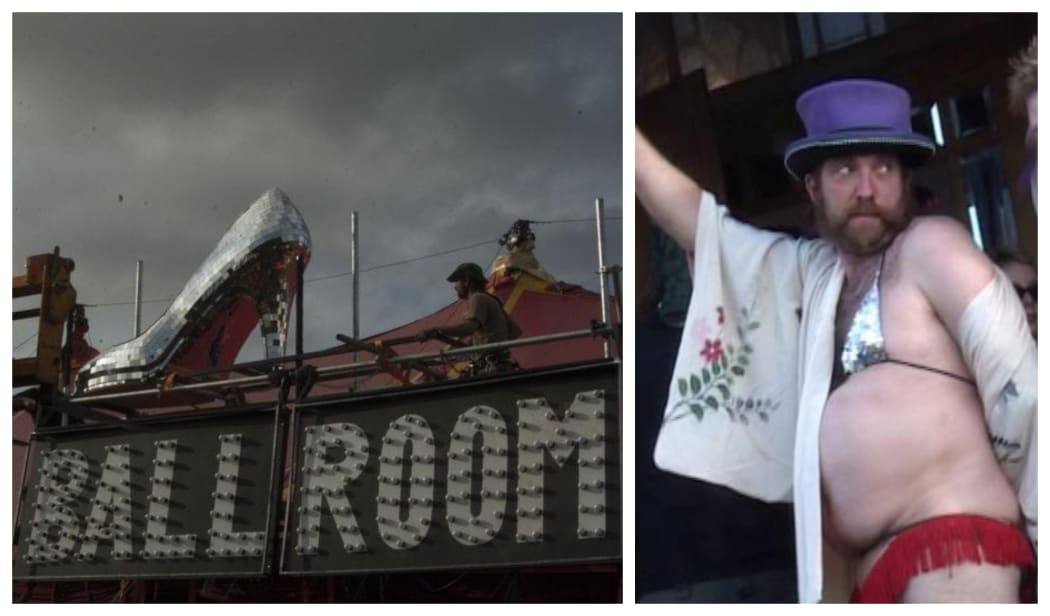
Lost Vagueness Ballroom / Roy Gurvitz Photo: Supplied
The story is told in the documentary Lost in Vagueness, although it’s not the documentary Gurvitz thought it was going to be. It focuses much more on him than it does on the event, he says.
“I originally went to Glastonbury in 1986… I lived in various vehicles and travelled around Europe in a vehicle but I landed in Glastonbury in 1986 and I got some work litter picking, didn’t really like that very much but it got me a foot in the door so to speak and I got onto site crew… until I eventually started running little areas over the course of the weekend.”
Gurvitz ended up running a little wine bar within the festival with a different theme every year.
“It’s sounds a bit middle-class now…it was very sort of shanty.”
However Glastonbury got out of control in 1989-90 with a rift forming between the travellers and the security, says Gurvitz.
“It was very heavy-handed and basically it was really territorial, let’s not beat about the bush, a lot of the travellers were dealing drugs and the security that turned up were also looking at the opportunity to deal drugs and so it became a bit of a turf war.”
But he says if the travellers had just packed up and left, there would be no festival. They were the festival.
For years there were people setting up on the outskirts of the festival, Gurvitz acted as a middleman and brought some of these people back into the festival who he thought might have something to offer.
“I can’t take all of the responsibility, but I did come up with this crazy idea of putting something on the site that was really not in keeping with the whole festival to sort of create this Las Vegas type of strip and that seems to be something that everybody could somehow relate to.”
Lost Vagueness was butterfly trainers, acrobatic strippers and Fat Boy Slim – who always wanted to dress up as a bumble bee.
It was about opening the door to things that weren’t normal or expected, says Gurvitz.
“We had a casino, we had a ballroom. The casino you could only get in if you were dressed up and that was very reminiscent of the 1920s, it was very flamboyant, lots of red velvet swags and champagne. We also had a lot of side shows which is where the butterfly trainer come into it with a myriad of other side shows.”
There was also a chapel, something a bit risqué at the time, he says. At night the chapel was a drum and bass stage and there was a boxing ring where people could get married - even Kate Moss and Pete Doherty are said to have married there. It's something Gurvitz won’t confirm or deny, but it is in her biography.
The shock value was an important part of it, so that people would pay attention, says Gurvitz.
“Having people like Norman Cook (Fat Boy Slim) and Madness come and play for us just gave an opportunity for a lot of other unknown smaller artists to get into the public view…people then saw we had substance and a lot of other things going on that was new and cutting edge and at the time just people had never experienced it before.”
This is when the corporates wanted in.
“We became flavour of the month.”
Lost in Vagueness: The Ultimate Untold Glastonbury Festival Story
So what went wrong?
“A lot of people wanted more and more, and a lot of people wanted to pull Lost Vagueness in a number of directions.”
When people wanted to pull out their bit to monetise it, things kind of went downhill, he says.
In 2007, the all-nighter diner that had been running for 4 or 5 years decided to go off to another area.
“I only found out about it when it appeared on the Glastonbury Festival website that the Lost Vagueness diner has moved to another field. That was impossible because the Lost Vagueness diner was just that…it can’t just go up and go somewhere else.”
He says the people that worked in it could have gone and set up their own diner but they couldn’t take the Lost Vagueness name with them.
Eventually emotion got the better of him, he says, but everything came from the heart.
“It’s an unbelievably stressful thing. I’m responsible for making sure 2000 people are fed and have water on site and we can get all the acts in and out and then I’ve got 25,000 public coming in every night. It’s a 24 hour a day for five days, absolute full-on mayhem.
“When it gets interrupted by lies and deceit it gets very stressful.”
These days Gurvitz owns a big top tent hire business. He doesn’t deal with artists, or the public really. But it’s still a bit of a logistical nightmare, he says.
Lost in Vagueness will air on Sky Arts (Sky Channel 20) Saturday 27 April, at 10.15pm.
